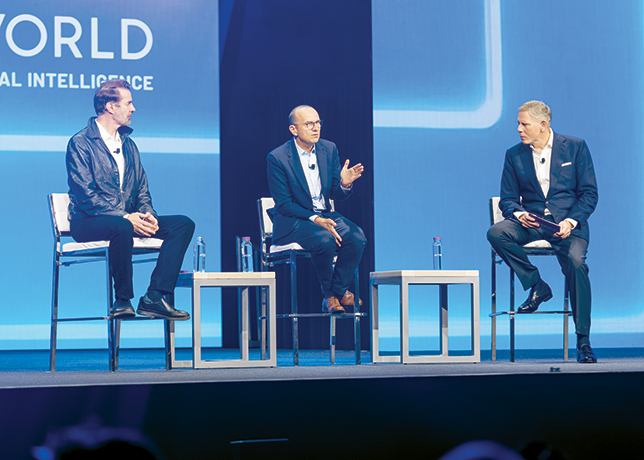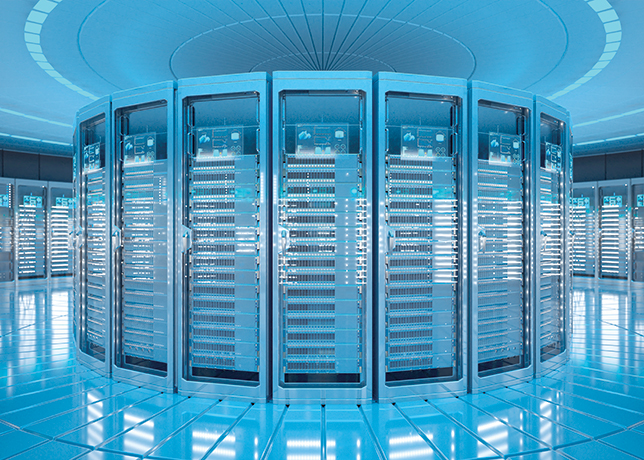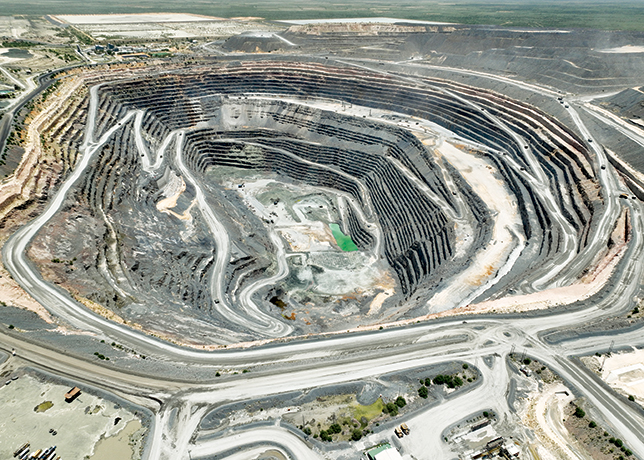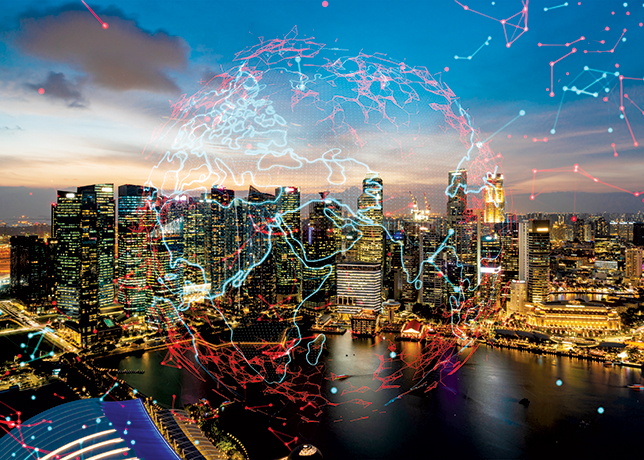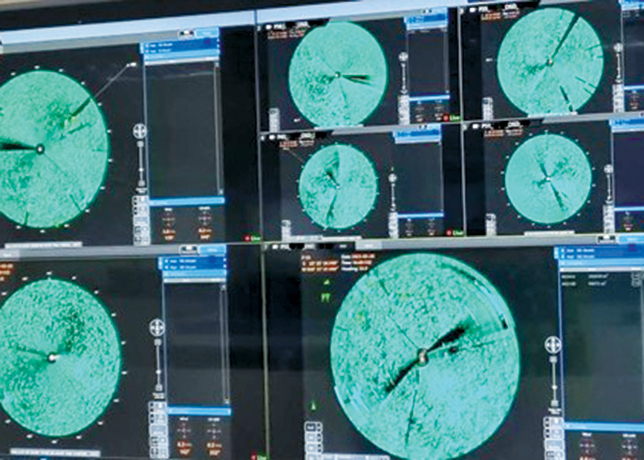
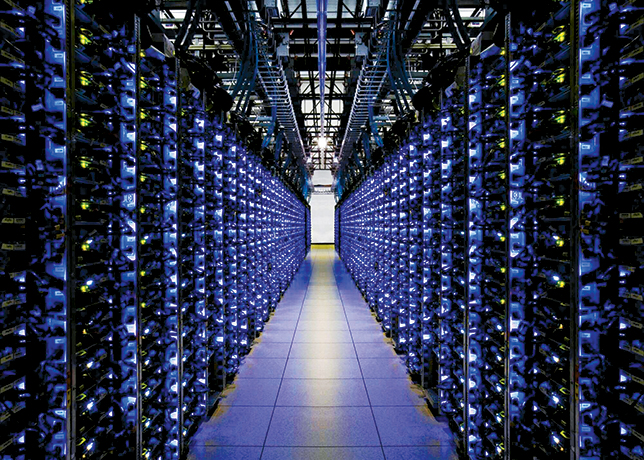 Data centres are among the largest users of energy today
Data centres are among the largest users of energy today
Clean data, AI, and smart meters are key to energy efficiency, but adoption gaps and data center power demands pose major challenges for the industry’s future, David Sheldrake, Global SVP of Sales360, POWWR, tells OGN
Data, data everywhere, and for the energy industry, it’s a double-edged sword.
Today, the total amount of data created, captured, copied, and consumed globally has reached nearly 150 zettabytes, with projections suggesting it will surge to 400 zettabytes within the next three years.
While more data can lead to deeper insights, its value hinges on quality and relevance, especially in energy, where inaccurate or inconsistent data can disrupt everything from grid stability to customer billing.
Artificial intelligence (AI) and machine learning (ML) are proving vital in turning this data deluge into actionable intelligence for energy suppliers.
These technologies excel at analysing complex datasets, spotting patterns, and predicting trends, enabling utilities to forecast demand, optimize supply, and maintain grid efficiency.
But their effectiveness depends on clean, well-structured data. In deregulated markets, where fragmented utility systems often lead to slow or inconsistent data exchange (EDI), errors can easily infiltrate workflows, causing costly downstream issues.
Ensuring that the right data is collected − not just in terms of volume but in context of accuracy too − is paramount. Yet, keeping data clean and true can be a real challenge for the energy industry.
This is especially true in regions where the sheer number of deregulated utility companies means that the electronic data interchange (EDI) can be slow and inconsistent. Once this bad data infiltrates the system, problems begin.
WHY SMART METERS ARE KEY
Not only are smart meters the key to a more sustainable future for all, but they are also the key to ensuring more accurate data in the future.
As we know, smart meters allow the energy industry to better manage what energy is needed, and where. This leads to reduced energy waste and us as a society becoming less reliant on traditional fossil fuels.
 |
David Sheldrake |
Smart meters are a valuable instrumental in helping mitigate the issue of bad data. Yet, despite the well-publicised benefits of smart meters in helping consumers better track their energy usage and get more accurate bills, their adoption is still lagging behind initial projections across many regions.
Here, it is still common for staff from utilities having to visit premises to physically read meters. This needs to change.
In these regions it is imperative that energy companies do what they can to educate consumers about the long-term benefits of smart meters and implement pilot programs to demonstrate their effectiveness.
Regulatory support and incentives can also be instrumental in accelerating adoption rates and encourage more to transition to smart meter technology.
LOOKING BEYOND THE 1S & 0S
However, whilst smart meters help the industry know what energy is being consumed at any one time, it is important to look beyond the 1s and 0s.
Know your customer (KYC) guidelines require an energy supplier to verify the identity, suitability, and risks involved with maintaining a business relationship with a customer to help with debt and fraud prevention. Whilst this seems good on paper, it is not infallible.
Human error, or confusion, at point of input can be common. For example, the same customer could be entered as dave, Dave, david, David, Davd or more.
Each business, therefore, needs to decide how aggressively it scrubs its data to help eliminate false positives. It used to come down to time.
Thankfully, there are innovative tools now available that can help, so that bad data does not impact others further on downstream.
Using such tool, plus ensuring that the right steps and measures are in place so that everyone would input ‘David’ correctly in the first place can help keep the data error free.
ENSURING DATA CAN LEAD TO ACTIONABLE INSIGHTS
There is little doubt that artificial intelligence (AI) and machine learning (ML) are at the forefront of transforming data into actionable insights for the energy industry.
These technologies excel in analysing complex datasets, identifying patterns, and predicting trends that would be indiscernible through conventional methods.
For energy suppliers, this means the ability to forecast energy demands and adjust supply with unprecedented precision, ensuring efficient use of resources and the stability of energy grids.
The ability to analyse complex datasets has also made AI the perfect technology to help scrub data of any inaccuracies.
To work effectively, it does need to be trained correctly, though, so that it understands that the same data field can be called different things in different databases, that is, surname, family name, or second name.
Therefore, energy suppliers must focus on implementing a robust data governance framework from the off to maintain data integrity, reduce noise, and avoid biases that could skew AI analyses and decisions further down the line. Otherwise, the technology will be blunted.
As AI continues to permeate throughout the entire industry, the future looks bright. Not only is the technology being used effectively to clean up bad data, but it is being used to improve customer service due to increasingly sophisticated chatbots, and smooth onboarding by accelerating the credit check process.
SURGE IN POWER CONSUMPTION
Of course, the irony here is that the very places needed to store all this extra data – data centres – are among the largest users of energy today.
These data centres are putting untold pressures on the grid across multiple countries. Energy suppliers are no strangers to shifting demand patterns, but the surge in power consumption from data centres is unlike anything the industry has faced before.
These facilities, the backbone of the digital economy, are expanding at a staggering pace, consuming more electricity than entire cities.
The rapid acceleration of AI for uses such as those detailed above is only exacerbating the trend, pushing energy usage to unprecedented levels. In fact, according to Goldman Sachs, AI-driven data centres could increase global power demand by 165 per cent by 2030.
In the US alone, data centre electricity consumption is expected to double, reaching up to 8 per cent of national power demand. This surge is forcing suppliers to rethink how they forecast and manage load while protecting already tight margins.
A PIVOTAL SHIFT
Bad data and inconsistent data management practices has thus far hampered the industry’s progress towards a greener future.
Because of this, there is more of a need than ever for precise and reliable data from the point of energy generation through to final consumption.
Challenges have typically arisen from the data either being fragmented or when the systems used to capture the data have been unable to cope.
At a time where data regulations have become increasingly stringent and potentially crippling fines have come in for noncompliance, it is not the time to take chances.
The good news is that in many respects it feels like we are turning a corner. Technology has become instrumental in reducing bad data entering the data chain and mitigating the effect should any slip through the net.
The likes of AI, ML, smart meters, and the Internet of Things (IoT) have all reshaping the landscape of energy data management.
Their integration across the energy sector signifies a pivotal shift towards more sophisticated and reliable data handling mechanisms, essential for the effective management of renewable energy resources.
However, this is not to say that humans should be removed from the process completely.
In my view, there should always be a human layer to any key business process. Automation is important for sure. But there will always be nuances within the data than only a human can correctly interpret.
By Abdulaziz Khattak













































































